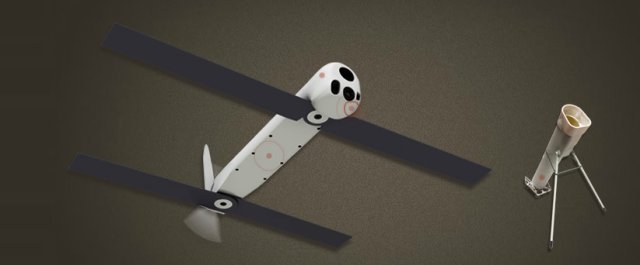One of AeroVironment’s fastest-growing products is the Switchblade UAV, a small “kamikaze” drone that launches from a tube or canister, extends its wings, and then flies as far as 10 kilometers under remote control, beaming back video to its control en route. Upon finding a target, Switchblade can be commanded to strike said target and detonate a small warhead, destroying drone and target simultaneously.
The U.S. Army has ordered tens of millions of dollars’ worth of Switchblades. In late 2013, a request by Col. Pete Newell, director of the U.S. Army’s Rapid Equipping Force, for “dramatically more” Switchblades sparked a $50 million buying spree on Switchblades by the Army. But now, Lockheed Martin may be trying to horn in on AeroVironment’s franchise.
Earlier this month, Lockheed won a $4.6 million contract to help the Pentagon develop a waterproof “maritime canister-launched small Unmanned Aircraft System (sUAS).” Unlike AeroVironment’s Switchblade, Vector Hawk isn’t being developed as a killer drone. But like Switchblade, Vector Hawk is small enough to be “man packable,” and it does launch from a canister.
Lockheed is working up several Vector Hawk variants to sell to the military, including a fixed-wing version, a vertical take-off-and-landing variant, and a tilt-rotor Vector Hawk that would fly like a mini V-22 Osprey. Foreseeing the addition of a Switchblade-like warhead wouldn’t seem too much of a stretch.
What’s Lockheed Martin really up to?
But is that really Lockheed Martin’s endgame? Will it attempt to first mimic, then replace, Switchblade’s success with Vector Hawk?
Possibly — but probably not without AeroVironment’s cooperation. Recall that last year, AeroVironment and Lockheed signed a “memorandum of understanding,” promising to ally Lockheed Martin’s “expertise in systems integration” with “AeroVironment’s knowledge of unmanned aircraft solutions.” From AeroVironment’s perspective, the initial goal was to enlist Lockheed’s help in commercializing AeroVironment’s Global Observer high-altitude spy drone. But farther down the road, both companies were clearly looking to explore other “opportunities for unmanned aircraft systems in international markets.”
Indeed, just earlier this year, Lockheed Martin and AeroVironment announced plans to cooperate on the production of drones in India, for sale both there and abroad. So, far from a “shot across the bow,” this month’s surprise announcement of a Lockheed breakthrough in the field of small-drone technology may be further evidence of how a beautiful friendship is blossoming between the two companies.
But what about the big question: Is an acquisition of AeroVironment by Lockheed Martin in the works? There’s no indication from the companies that this is where they’re headed, but never say never.
Source: Motley Fool

